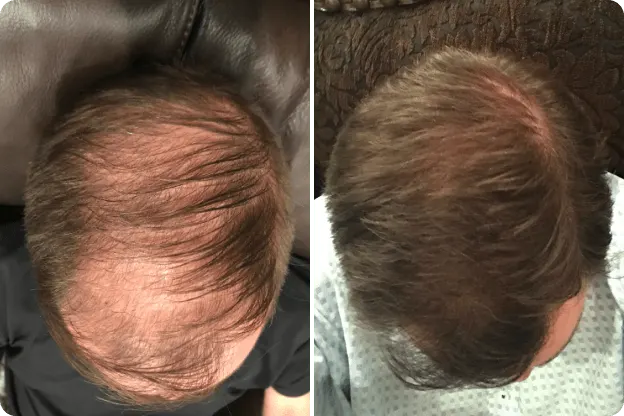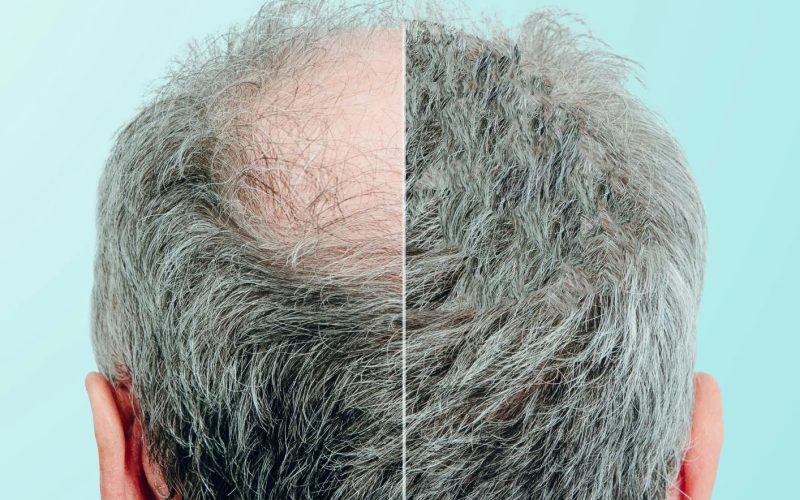FINASTERIDE


Finasteride History
This drug was approved for medical use in 1992 for the treatment of prostatic hyperplasia (this is when the prostate is enlarged). Known as Proscar, in 1993 the makers of Finasteride were named ‘inventors of the year’ for their work on the creation of the drug.
Finasteride was brought to light in the 70s by researcher Imperato-McGinley, who spoke of a village in the Dominican Republic where boy boys lacked 5 alpha-reductase.
It was determined that there was no hair loss and the prostate glands were smaller because the children did not have this enzyme.
DHT levels in these individuals were also found to be low.
Finasteride was made to reflect its ability to block 5 alpha reductase thereby reducing prostate size and fighting hair loss. It took nearly two decades before it was approved for medical use.
It wasn’t until 1999 that Finasteride was approved in the UK as Propecia in the form of 1mg in the fight against hair loss. The FDA approved this drug in the US a little earlier than that in 1997.
This means we have over 20 years of experience with finasteride.
Male Pattern Hair Weaving and Finasteride
Hair loss in men can occur at any point in their lives and up to 60% hair loss is experienced by the age of 50.
Male pattern hair loss, known as androgenic alopecia, is a condition that is normally inherited and linked to both genetics and hormones.
Hair grows out of the follicles, but as baldness and hair loss occur. These follicles shrink until there is little to none or less hair growing at that point than before. As the follicles shrink, the hair becomes thinner and shorter. This is known as miniaturization of hair follicles. Hair also sheds much faster than normal non-bald hair.
The science behind this comes from testosterone, which is then converted into another hormone known as Dihydrotestosterone or DHT. This hormone means that the follicles shrink and the scalp produces less hair.
The enzyme that converts testosterone to dihydrotesterone, which causes hair loss by acting on hair follicles, is the 5 alpha reductase type 2 enzyme. The drug that prevents hair loss by stopping the activity of this enzyme is “finasteride”. While finasteride, taken at a dose of 1 milligram per day, benefited 90% of male users over the age of 18, hair reduction continued in only 10% male patients. It gives better results especially in young patients who have just started hair loss and thinning hair, but care should be taken when using them under the age of 18. Finasteride is less effective in anterior hairline shedding. It has been proven that the efficacy of finasteride is greater in the crest/vertex region of the posterior scalp.
It should be used for at least 1 year to stop hair loss, strengthen hair and thickening effect on miniature hair. Generally, it has been reported that the effects continue even after 5 years of use in some users. When the use of finasteride is stopped, 2-6 months later, there is a loss in hair volume and mass, which has increased with the effect of the drug. The drug effects disappear and the hair returns to its former state as if it had never been treated.
The rate of this side effects that can be seen in the use of finasteride is about 2%. In other words, 98 out of every 100 users will not have a side effect. The side effect that people most often ask us about and fear is sexual dysfunction. This side effect, which can be seen as difficulty in erection and indifference to the opposite sex, and decreased libido. It may occur immediately after the use of the drug, and when the drug is discontinued, normal sexual functions are returned within a few weeks, the side effects are not permanent.
Since finasteride is a drug that inhibits the growth of the prostate gland and shrinks it, it can reduce the severity and amount of sperm ejaculation; It can cause a temporary decrease in sperm count. Apart from these, mild enlargement and tenderness in the breast tissue were reported in 0.4% of the patients. While other side effects such as breast tenderness and enlargement can be seen in men, there was no correlation between the occurrence of breast cancer in men and the use of finasteride. Finasteride is a drug used to inhibit prostate enlargement, and the patient should inform his doctor about the use of this drug, since approximately 50% decrease is observed in prostate PSA values with its use.
The use of finasteride in pregnant women is prohibited because it may cause congenital anomalies in the male fetus genital area. Having intercourse with a man using finasteride does not adversely affect the fetus and the woman. In a study on the use of 1 mg of finasteride in women in the postmenopausal period, it has been proven that this drug has no effect, and that the use of 5 mg can be beneficial in androgenic female type hair loss.
Known Misconceptions About Finasteride
False : Finasteride use causes hair regrowth
Correct : No, finasteride only acts on thinning hair, making hair thicker, it does not regrow hair in case of total hair loss, that is, in case of baldness.
False: Once taken, it is necessary to use it continuously.
Correct : No, it can be left at any time. Within 2-6 months after the drug is discontinued, the hair thins again and returns to its former state.
False: It is effective only on the top and back of the head.
Correct : No, it thickens hair in all areas, but is more effective in the vertex.
False: It can lower testosterone levels.
Correct : No, on the contrary, testosterone levels increase by about 10-15% with regular use.
False: Sexual side effects are permanent.
Correct: No, sexual function returns a few weeks after the drug is stopped.
Finasteride & Hair Transplant
When it comes to hair transplant and finasteride, several scenarios can affect the results.
First of all, if you’re considering a hair transplant, you may want to consider taking finasteride for at least a year before going under the knife, especially if you’re under the age of 30 and the rate of progression of your hair loss is being evaluated.
This is because it can take 6 months to 1 year for finasteride to start showing results.
Waiting for this period allows the doctor to work on thinner areas of the scalp that are not visible or dense before starting the medication.
In 2005, taking 1 mg of finasteride per day was found to improve transplanted scalp areas and increase hair density.
Free Consultation
Thinking about hair treatment options possible for you?
You can get a Free Online Consultation session with our professional team right now!


